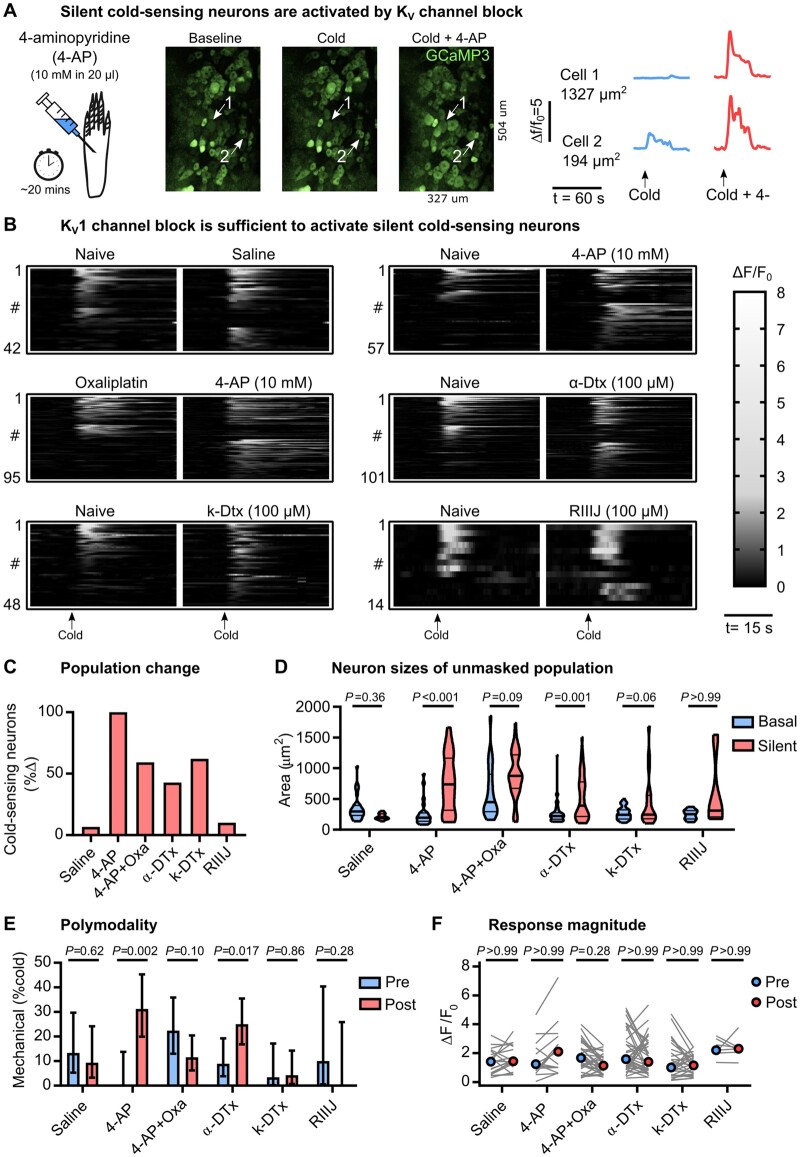Figure 7.
Blocking Kv1.1 voltage-gated potassium channels is sufficient to induce de novo cold sensitivity in silent cold-sensing neurons. (A) Examples images and traces showing that peripheral blockade of voltage-gated potassium channels induces novel cold-sensitivity in normally cold-insensitive sensory neurons (Cell 1). (B) Heat maps showing the effect of intraplantar injection of different potassium channel blockers on the peripheral representation of cold. The bar denotes 15 s. (C) Quantification showing the change in the number of cold-sensing neurons after treatment with different potassium channel blockers. (D) Violin plots showing the cross-sectional area of basal cold-sensing neurons in the naïve state (blue) and of silent cold-sensing neurons unmasked by potassium channel block (red). Medians were compared using Kruskall-Wallis test followed by Dunn’s multiple comparison test. (E) Bar plot of the percentage of polymodal cold-sensing neurons that also respond to noxious mechanical stimuli before (blue) and after (red) treatment with potassium channel blockers. Proportions were compared using a χ2 test. Error bars denote 95% confidence intervals. (F) No change in the median response magnitude of neurons that responded to cold both before (blue) and after (red) treatment with potassium channel blockers, as determined by Kruskall-Wallis test followed by Dunn’s multiple comparison test. n = 42 from three saline-treated mice (one male and two females), n = 57 from six 4-AP-treated mice (five males and one female), n = 95 from three 4-AP-treated mice pre-injected with oxaliplatin (two males and one female), n = 101 from four α-dendrotoxin-treated mice (two males and two females), n = 48 from three k-dendrotoxin-treated mice (one male and two females), and n = 14 from three RIIIJ-treated mice (three females).

